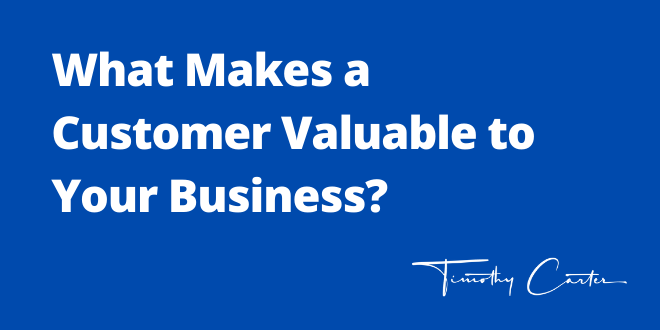
How Much Education Does an Entrepreneur Really Need to Succeed?
June 22, 2021
The Beginner’s Guide to User-Generated Content
July 1, 2021Every entrepreneur knows that customers are important. Without customers, you wouldn’t have a business. These are the patrons who buy your products and services, supplying your company with revenue so it can serve other customers; they’re the biggest link in the chain.
Naturally, most entrepreneurs focus heavily on what they can do to become valuable to a customer. They want to improve their products, improve their services and even serve customers better with better customer service and sales reps.
But what about the other side of the equation? What is it, specifically, that makes customers valuable to you? And how can you boost that value?
Customer lifetime value
Most companies attempt to project the lifetime value that a customer can bring with an objective metric called “customer lifetime value” or something similar. Generally, this equation tries to estimate how much money a customer will spend with the company, taking into account how long they’re going to buy products and how many products they’re going to buy.
Every customer is different, of course, but customer lifetime value attempts to approximate the average user.
There are more factors to consider in this equation — and ample ways in which you can maximize your effectiveness.
Purchases
First, you need to think about the purchases that a customer makes. By definition, a customer will be making at least one purchase from your business, but there are several variables you can improve in this dimension.
- Value. More valuable customers will be making bigger purchases. Depending on your business, that could mean purchasing more products with each order or upgrading to a higher tier of service. You can increase customer value by increasing the value of each transaction; for example, you can incentivize upgrades or offer bulk discounts. Of course, this does have limited returns, because at least some of your customers will be working with tight budgets.
- Frequency. How often are your customers buying from you? Do you offer a lifetime warranty so each customer only buys once? Can you offer a subscription service so customers pay for your services on a monthly basis?
- Regularity. How consistently do your customers make purchases? If they buy, on average, 12 times a year, are those purchases evenly distributed throughout the year, once a month or so? Or do they buy in bulk? For many businesses, a consistent, steady stream of revenue is preferable to seasonal orders.
Loyalty
Customer loyalty also matters. You may have a customer willing to buy significant volumes of your product — but what happens when they leave after a month to switch to one of your competitors? This is why customer retention is so valued among successful businesses; encouraging repeat customers with loyalty rewards programs, discounts and other incentives can ensure that your best customers stick with you as long as possible. Good products, good customer service and ongoing support can also help.
Referrals and brand evangelism
Some of your customers are capable of doing good for your brand in excess of their traditional purchases. If they like your brand enough, they’ll evangelize it to others. In some cases, this amounts to a handful of referrals to friends and family members. In other cases, your brand evangelists will basically advertise on your behalf, showing off your products and engaging with your brand on social media.
You can encourage this by surprising your most loyal customers with extra rewards and maintaining a solidly active social media strategy. But much of this happens as a natural byproduct of company excellence.
Acquisition cost
Value can also be considered as the difference between the proceeds from your customers and the costs it took to acquire them. Accordingly, it’s beneficial to calculate your customer acquisition costs when running these equations. If you can decrease your acquisition costs while keeping your total customer value high, you’ll stand to see significant gains.
Maximizing customer value
So what steps can you take to maximize the value of your average customers?
- Research your target market. Truly get to know your customers. Is it more important for them to get high quality or a low price? What would make them stay loyal to a company even in the face of a competitive offer?
- Analyze your strategies. Loyalty programs, excellent customer service and discounts can all improve the value of your customers – but not all strategies are equal. Analyze the possibilities before and after you begin using them.
- Experiment and adapt. Keep trying new things and see how your average customer value changes; keep the tactics that work best and discard the ineffective ones.
With a better customer value strategy in place, you’ll be able to serve your customers better and generate more revenue simultaneously. It’s not always a straightforward process, but with the data backing your decisions and a bit of creativity, you can create a strategy that’s much more streamlined for your organization.
Originally appeared in Entrepreneur






